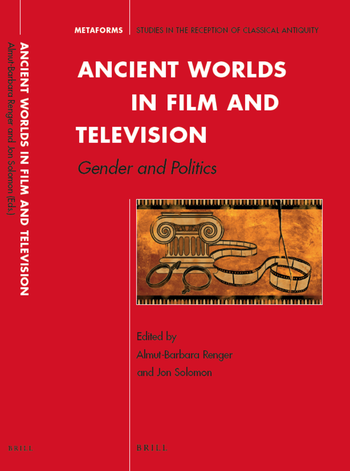Publication
You are hereby invited to submit your paper for the conference proceedings, which we aim to publish in 2015.
The articles will be peer reviewed, and based on the reviews, the best will be included in the volume.
General Remarks
Brill has invited us to publish a volume based upon the conference. Due to the fact that this will be a peer-reviewed volume, we will need papers in a timely fashion. We considered asking those of you interested in contributing to the volume to bring your final papers with you to the conference; however, since we hope the conference will provide for lively discussion, we instead are setting a deadline of 31 August 2013.
General Guidelines
Papers should be approximately 7,000 words, including footnotes and bibliography. Please send your article (double spaced, including bibliography and footnotes) by 31 August 2013, as an e-mail attachment to Jan Ole Bangen (jobangen@zedat.fu-berlin.de). Please emphasize words, phrases and titles of books by italicizing them, but avoid boldface and underlining. Use italics for italics. Underlined text will be typeset as italics. The use of bold type is discouraged and will be typeset in italics or roman text, unless there is a very clear reason for using bold and it is used sparingly. For editing purposes, we would prefer to receive your article as a Word document. If diacritical characters are used, a scanned version of the document, or PDF-file will also be needed. Please include diacritics only if they are available as true-type-fonts and can be sure they will convert into web page text without difficulty. Please note, however, that the volume is intended for a wide scholarly audience and it may be appropriate to use less complicated transliteration systems in the interests of wide accessibility.
For more details see below and Chicago Manual of Style, 16th edition (www.chicagomanualofstyle.org), Brill books generally follow the Chicago Manual of Style.
Autobiographical Statement
Every article should be accompanied by a short autobiographical statement of 120–150 words mentioning the author’s institutional affiliation, main fields of research, and three titles of relevant publications.
Fonts
Please use a sans-serif font, e.g. Arial, at 12 point, single spaced. Brill advises for Japanese: ms Mincho and Hiragino Mincho Pro (for mac). For Chinese: PmingLiU or Simsun, both compatible with windows and mac. For the use and explanation of other ‘difficult’ fonts, please see Brill's author gateway. Brill has its own font system which contains most foreign scripts: Brill Fonts.
Style Issues
Distinguish in typing 0 (zero) from O (capital letter); 1 (one) from I, l (letters). The first line of a paragraph should be indented, except after a blank line, a (sub‐)heading or a block quotation. Use a tab, not spaces, for indentation. Normally, paragraphs should not be separated by a blank line. If you use section headings, make sure these are recognizable as such. If you have more than one level, there should be a clear and consistently used distinction between them. Please avoid numerical levels, such as 1.1.1.3, unless you use more than 4 levels of heading (to be avoided as much as possible). For typesetting purposes you could mark the levels with L1, L2, L3, which will be removed at typesetting. Brill adheres to use of title‐casing in headings. Use footnotes rather than endnotes. Footnote numbers should follow any punctuation marks. Quotation marks: single ‘quotation marks’ are used to distinguish words, concepts or short phrases. Double quotation marks (“ ”) are used for direct quotations of fewer than 25 words, and run on in the text. Double quotation marks are also used for the titles of articles from journals or reference works and titles of chapters in edited volumes. Larger sections of quoted text should be set off from the running text by a blank line before and after the quoted text, and the text should be indented on the left‐hand side. No quotation marks should be used for these block quotes. A professional typesetting company will compose your manuscript according to our house‐style, so your manuscript needs only to have the minimum of formatting when you send it in. Please clearly mark (the level of) headings, (block) quotations, paragraphs, insertion points for illustrations and/or tables, footnotes or endnotes.
Footnotes
Footnotes should be numbered consecutively for the whole article. They must refer to the bibliography by giving the author’s family name, an abbreviated title of the publication, followed by page nr(s). For example:
- Books: Author, Title Words, 135.
- Articles: Author, “Title Words,” 135–147.
For more details see Chicago-Style Citation Quick Guide.
References
Articles must contain a complete alphabetically-ordered bibliography at the end of the main text, according to the following format:
- Books: Musterman, Alexander B., This is the Title of his Book: This is the Subtitle, City: Publisher, Year.
- Articles in Journals: Musterman, Alexander B., “This is the Title of the Article,” Journal 5:1 (1999), 135–147. Please, do avoid “100ff.” (both in the references and in the bibliography).
- Articles in Books: Musterman, Alexander B., “This is the Title of the Article,” in: Musterwoman, Alexandra B. (ed.), This is the Title of the Collective Volume, City: Publisher, Year, 135–147.
When you come across a publication with 3 or more authors, please list each author in full.
For more details see Chicago-Style Citation Quick Guide.

